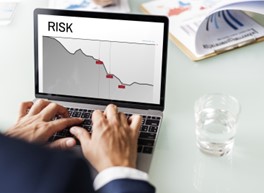Exploring the Risks of Alternative Investments: What You Need to Know with Scott Tominaga
Investing in alternative assets can offer exciting opportunities for diversification and high returns. However, like any investment, alternative assets come with their own set of risks. Understanding these risks is crucial for making informed decisions and effectively managing your investment portfolio. In this blog, we’ll explore the key risks associated with alternative investments and how to navigate them.

Lack of Liquidity
One of the primary risks of alternative investments is the lack of liquidity. Unlike stocks and bonds, which can be easily bought and sold on public exchanges, many alternative assets are not readily convertible to cash. Real estate, private equity, and collectibles, for example, can take considerable time to sell. This lack of liquidity can pose challenges if you need to access your money quickly for emergencies or other opportunities.
Higher Fees and Costs
Alternative investments often come with higher fees and transaction costs compared to traditional investments. These costs can include management fees, performance fees, and other expenses related to the maintenance and operation of the investment.
Complexity and Limited Information
Alternative investments can be more complex and less transparent than traditional investments. They often require specialized knowledge and due diligence to understand fully. Additionally, there is usually less publicly available information about these investments, making it harder to assess their value and performance. According to investment expert Scott Tominaga, it’s vital to conduct thorough research and seek professional advice when considering alternative investments.
Market and Economic Risks
Alternative assets are not immune to market and economic risks. While they may have low correlation with traditional markets, they can still be affected by broader economic conditions. For example, real estate investments can suffer during economic downturns, and changes can influence commodities in supply and demand. It’s important to consider these risks and diversify your portfolio accordingly.
Regulatory and Legal Risks
Regulatory and legal risks are also significant concerns for alternative investments. Different countries and regions have varying regulations that can impact the viability and profitability of certain investments. Changes in laws and regulations can affect the market value and liquidity of alternative assets. Staying informed about regulatory changes and working with experienced advisors can help mitigate these risks.
Potential for Fraud and Mismanagement
The alternative investment market can be more susceptible to fraud and mismanagement due to its less regulated nature. Investors need to be cautious and conduct thorough due diligence before committing their money. This includes verifying the credentials and track records of fund managers and investment firms, as well as understanding the underlying assets and investment strategies.

Valuation Challenges
Valuing alternative assets can be challenging due to their unique characteristics and lack of market comparables. Unlike publicly traded stocks, which have clear market prices, alternative assets often require subjective valuation methods. This can lead to discrepancies in valuation and difficulties in accurately assessing the worth of an investment. Scott Tominaga advises investors to be cautious and seek multiple valuations when dealing with alternative assets.
Conclusion
While alternative investments offer attractive benefits, they also come with significant risks that investors must understand and manage. Lack of liquidity, higher fees, complexity, market risks, regulatory challenges, potential for fraud, and valuation difficulties are all critical factors to consider. By conducting thorough research, seeking professional advice, and diversifying your portfolio, you can better navigate the risks of alternative investments and make informed decisions that align with your financial goals.
Scott Tominaga is a professional in the hedge fund and financial services industry. He is skilled in all aspects of daily back-office operations, such as investor relations and marketing. Learn more about Scott and his background in investment by visiting this blog.




Leave a Reply